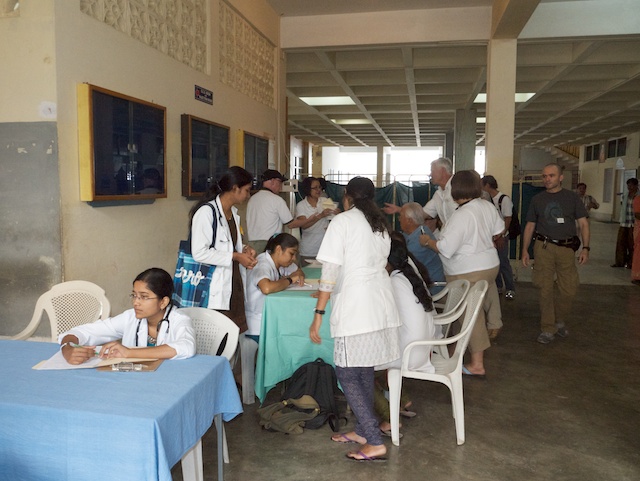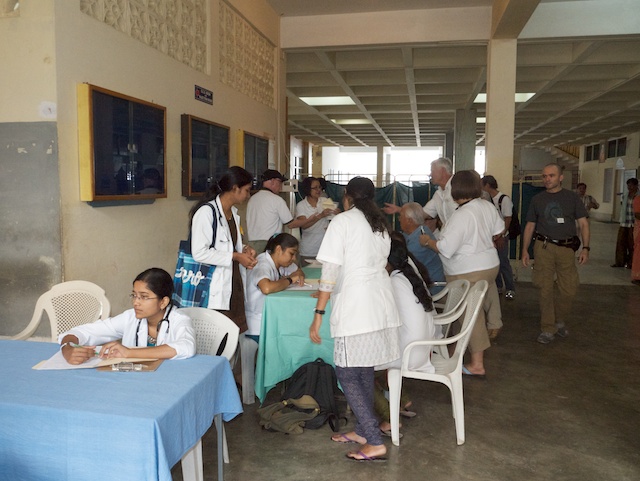On our first full day, sign-in, photography, and medical interview stations are set up inside the entrance to the hospital. Each of the hopeful patients have a file set up, their photo taken, and then move on for a check of their vital signs and an interview with a surgeon and anesthesiologist to evaluate their suitability for surgery. They continue interviews with the pediatricians and dentist. At any point in this circuit, they may be dismissed if they are not physically strong enough to undergo surgery, or if they present problems that are too complex to address in our limited time. Of over one hundred forty six potential patients interviewed, eighty-five were designated as suitable for surgery at this time. Most of the patients have cleft lips or cleft palates (or both), but many are burn victims with debilitating scars on their faces and limbs.

Hopeful patients begin the screening process. Medical students assist with translation.
The anxiety of the parents and children is evident in their faces. There is hope for those who were dismissed. A local surgeon at the hospital, Dr. Mehesh, is reviewing the files of those turned away to determine if he can address their issues. In fact, all of the local hospital staff and medical personnel are very much involved in the work of the team assisting with translation, backing up the nursing staff and surgery teams.
The screening lasts until mid-afternoon. At this point the Medical Director of our team, Dr. Sibrand Schepel, and the head nurse, Sandra Swiatek, begin to map out a schedule of surgeries for the coming days. Kimberly Vellekamp, the Medical Records clerk begins to assemble the patient files and the patient photos are sorted and stapled in their files.
Crowds churn through the hospital with many onlookers fascinated with the work of the team. The new patients and their families are housed in a wing of the hospital. They have already settled in and will be sheltered and fed throughout the two week duration of the project. The patients scheduled for surgery the following day are moved to a ward close to the operating rooms. Most of the patients are infants or small children. They nap on ward beds alongside their mothers. Fathers pace the floors and siblings play with one another. For some it may yet be days before surgery. For all it must seem like an agonizing wait.




